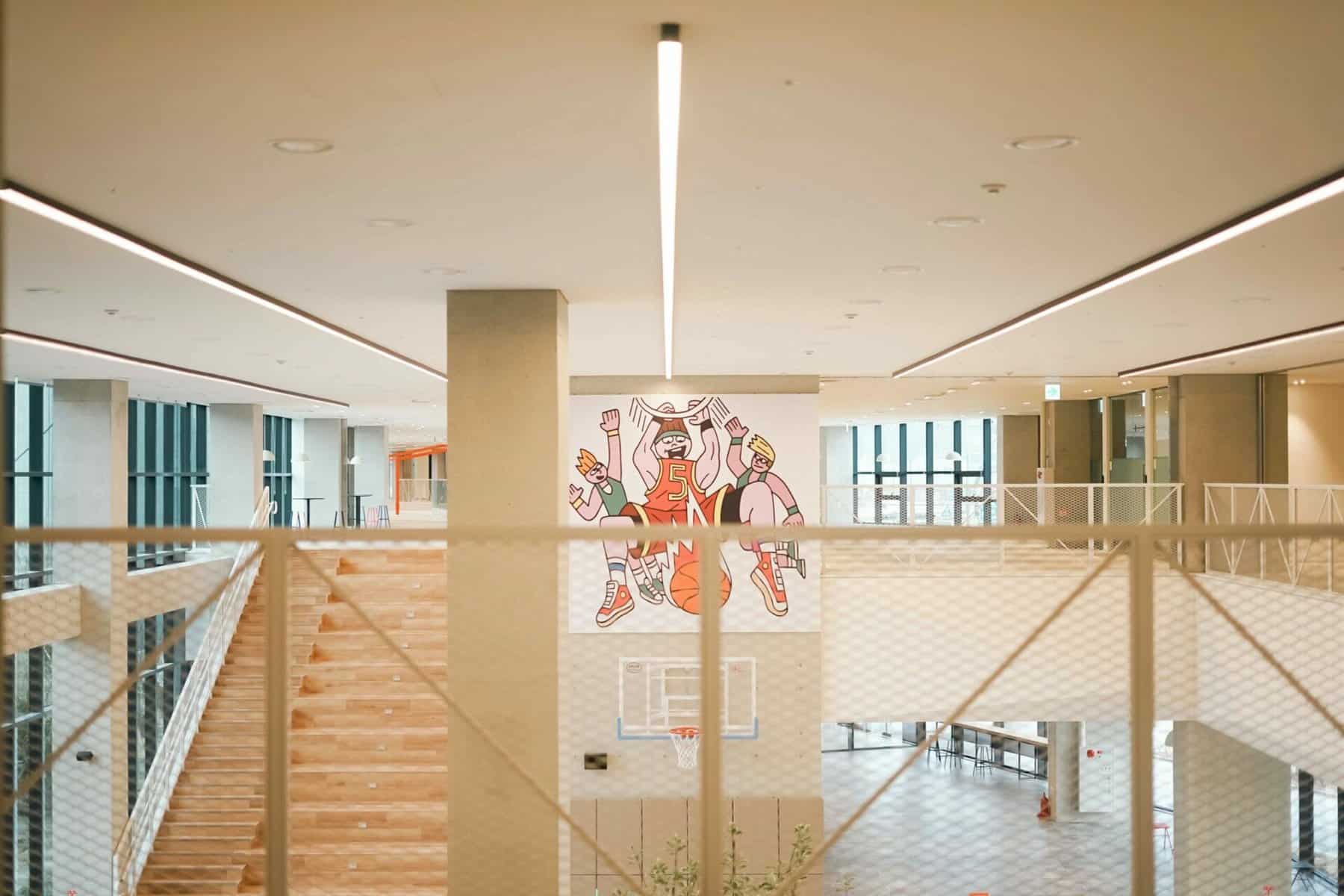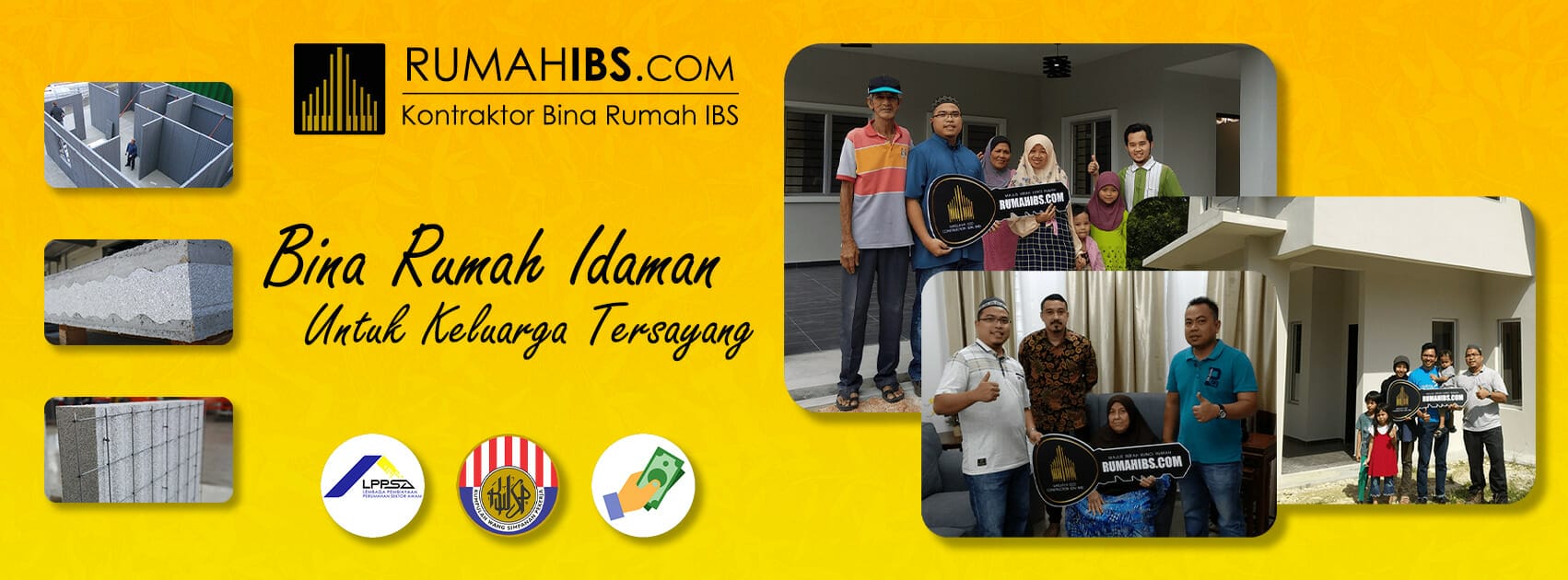Mastering the Construction Process: A Comprehensive Guide to Building Excellence
1. Introduction
In the bustling realm of construction, where dreams are forged into reality and structures rise from the ground, understanding the intricacies of the construction process is akin to wielding a master key to success. Welcome to “Mastering the Construction Process: A Comprehensive Guide to Building Excellence” tailored specifically for the Malaysian audience.
Unveiling the Blueprint of Construction
Embark on a journey where every brick, every beam, and every nail holds the promise of a future edifice. In this article, we delve deep into the construction workflow and methodology, unraveling the mysteries that shroud the building industry. From the humble beginnings of mobilization to the triumphant handover of keys, we navigate through the stages of construction with precision and finesse.
Navigating Through the Terrain of Construction
Imagine a construction site as a canvas, waiting to be painted with the strokes of skillful craftsmanship and meticulous planning. As we embark on this voyage, our compass points towards a plethora of topics encompassing site preparation, foundation construction, plumbing and electrical installation, wall construction, roofing, and interior finishing. Each segment is meticulously dissected to provide you with actionable insights and practical knowledge.
Joining Forces in the Pursuit of Building Excellence
Dear readers, whether you are seasoned professionals in the realm of construction or enthusiastic amateurs embarking on your maiden project, this article is tailored to enrich your understanding and elevate your prowess. Together, let us embark on this journey to master the art and science of construction, one brick at a time.
Key Components of the Construction Process
Before we embark on our exploration, let’s take a moment to glance at the key components that form the backbone of the construction process:
| Component | Description |
|---|---|
| Mobilization and Accommodation | The process of setting up the construction site and providing accommodation facilities for personnel. |
| Site Preparation and Earthwork | Clearing the site and preparing the ground for construction, including earthmoving activities. |
| Foundation and Structural Elements | Construction of foundational structures and reinforcement of structural elements for stability. |
| Plumbing and Electrical Installation | Installation of plumbing and electrical systems to ensure functionality and safety. |
| Wall Construction and Finishing | Building walls and applying finishes to enhance aesthetics and durability. |
| Roofing and Interior Finishing | Installation of roof structures and finishing the interior spaces of the building. |
| Final Touches and Handover | Completing remaining tasks, inspecting the project, and handing over the keys to the client. |
Join us as we embark on an enlightening journey through each component, unraveling the mysteries of construction and empowering you with knowledge and understanding. Let’s dive in!

jiran family 4e0tATgQaJg unsplash scaled
2. Mobilization and Accommodation
In the vibrant tapestry of construction, the initial stages of mobilization and accommodation lay the groundwork for a seamless journey ahead. Let’s dive into the nitty-gritty of these essential components, tailored for our Malaysian audience.
Setting the Stage: Mobilization Process
Before the first brick is laid or the foundation poured, the mobilization process sets the stage for the construction endeavor. Mobilization encompasses a series of preparatory activities aimed at transforming an empty plot of land into a bustling construction site.
Key Elements of Mobilization:
- Site Establishment: The site is prepared for construction activities, including setting up temporary structures like site offices, storage facilities, and security fencing.
- Resource Allocation: Materials, equipment, and manpower are mobilized to the site, ensuring that all necessary resources are readily available for the construction process.
- Logistics Planning: Efficient logistics planning is crucial to ensure the smooth flow of materials and personnel to and from the construction site, minimizing delays and optimizing productivity.
Providing Comfort: Accommodation Facilities
As the construction process unfolds, providing adequate accommodation for personnel becomes paramount. A well-rested and comfortable workforce is essential for maintaining productivity and morale on the construction site.
Essential Features of Accommodation Facilities:
- Temporary Housing: Provision of temporary housing facilities such as dormitories or barracks for construction workers, equipped with basic amenities for daily living.
- Amenities and Services: Access to amenities such as dining halls, recreational areas, and laundry facilities ensures the well-being and satisfaction of construction personnel during their stay.
- Health and Safety Measures: Implementation of health and safety protocols to safeguard the well-being of workers, including regular sanitation, medical facilities, and emergency response procedures.
Embracing Diversity: Catering to Malaysian Needs
In Malaysia, with its diverse landscape and cultural tapestry, catering to the unique needs of construction personnel is of utmost importance. From the bustling urban centers to remote rural areas, accommodation facilities must be tailored to suit the preferences and requirements of workers from various backgrounds.
Cultural Considerations in Accommodation:
- Halal Food Options: Providing halal food options in dining facilities to accommodate the dietary preferences of Muslim workers, ensuring inclusivity and respect for religious beliefs.
- Cultural Sensitivity: Creating inclusive accommodation spaces that respect the cultural norms and traditions of diverse communities, fostering a harmonious and inclusive work environment.
Conclusion
As we navigate through the intricate web of mobilization and accommodation in the construction realm, it becomes evident that these initial stages play a pivotal role in shaping the trajectory of the entire project. By prioritizing efficient mobilization processes and providing comfortable accommodation facilities, we set the stage for a successful construction journey, grounded in productivity, safety, and inclusivity. Let us forge ahead, embracing the challenges and opportunities that lie ahead in the dynamic landscape of construction in Malaysia.
Table: Mobilization and Accommodation Facilities
| Component | Description |
|---|---|
| Site Establishment | Preparing the construction site for activities. |
| Resource Allocation | Mobilizing materials, equipment, and manpower to the site. |
| Logistics Planning | Planning efficient transportation and material flow. |
| Temporary Housing | Providing dormitories or barracks for construction workers. |
| Amenities and Services | Offering dining halls, recreational areas, and laundry facilities. |
| Health and Safety Measures | Implementing sanitation, medical facilities, and emergency protocols. |
| Halal Food Options | Providing food options that adhere to halal dietary restrictions. |
| Cultural Sensitivity | Respecting diverse cultural norms and traditions in accommodation. |
As we embark on our construction journey, let us ensure that mobilization and accommodation pave the way for success, fostering a conducive environment for productivity and well-being.
3. Site Preparation and Earthwork
Preparing the groundwork for a construction project is akin to laying the foundation for a grand endeavor. In this section, we delve into the crucial aspects of site preparation and earthwork, unraveling the intricacies that pave the way for successful construction endeavors.
Understanding the Terrain: Site Preparation
Before a single brick is laid or a beam erected, meticulous planning and preparation are required to ensure a smooth transition from vacant land to bustling construction site. Site preparation involves a series of crucial steps, including:
- Site Clearing: The initial phase involves clearing the site of any obstacles such as vegetation, debris, or existing structures. This sets the stage for subsequent construction activities and ensures a clean canvas for development.
- Setting Out: Precision is paramount in setting out the dimensions and layout of the construction site. This involves marking the boundaries, elevations, and alignment of structures based on architectural and engineering plans.
Shaping the Landscape: Earthwork Techniques
Once the site is cleared and set out, it’s time to sculpt the landscape to suit the needs of the project. Earthwork encompasses a range of activities aimed at reshaping the terrain and preparing it for construction. Key techniques include:
- Excavation: This involves the removal of soil, rock, or other materials from the site to create trenches, foundations, or basements. Excavation must be performed with precision to avoid destabilizing surrounding structures or compromising safety.
- Grading: Grading involves leveling the ground to achieve the desired slope and elevation. This ensures proper drainage and prevents water from pooling on the construction site, mitigating the risk of erosion and water damage.
- Compaction: Compaction is the process of compressing soil to increase its density and stability. This is crucial for ensuring the structural integrity of foundations and ensuring that the ground can support the weight of buildings and infrastructure.
Harmonizing Nature and Progress
In the realm of construction, the harmonious coexistence of nature and progress is of paramount importance. Sustainable practices such as erosion control, vegetation preservation, and waste management play a vital role in minimizing the environmental footprint of construction activities.
Site Preparation and Earthwork in Malaysia
In the Malaysian context, site preparation and earthwork are governed by stringent regulations aimed at preserving the environment and ensuring public safety. From the lush landscapes of Penang to the bustling metropolis of Kuala Lumpur, construction projects must adhere to guidelines set forth by local authorities to minimize environmental impact and promote sustainable development.
Table: Key Components of Site Preparation and Earthwork
| Component | Description |
|---|---|
| Site Clearing | Removal of obstacles and vegetation from the construction site |
| Setting Out | Precise marking of site boundaries and structural alignment |
| Excavation | Removal of soil and rock to create trenches and foundations |
| Grading | Leveling the ground to achieve desired slope and elevation |
| Compaction | Compression of soil to increase density and stability |
As we embark on the journey of construction, let us not overlook the importance of laying a solid foundation, both literally and figuratively. Join us in the next section as we delve into the intricacies of foundation construction and structural elements.

jiran family 0rqS3f0txBQ unsplash scaled
4. Foundation and Structural Elements
In the realm of construction, the foundation serves as the bedrock upon which the entire edifice stands tall and proud. Join us as we delve into the crucial aspects of foundation construction and structural elements, unraveling the mysteries that underpin the stability and longevity of buildings.
Laying the Groundwork: Foundation Construction
The foundation of a building is not merely a slab of concrete buried beneath the ground; it is the anchor that ensures stability and resilience against the test of time. Let’s explore the key components of foundation construction:
- Piling: In areas with unstable soil conditions or high load-bearing requirements, piling is employed to transfer the weight of the structure to deeper, more stable layers of soil or rock. This involves driving piles—long, slender columns—into the ground and anchoring them securely.
- Pilecap: The pilecap serves as the bridge between individual piles, distributing the load evenly and providing a stable platform for the structure above. It is typically made of reinforced concrete and designed to withstand the forces exerted by the building.
- Raft Foundation: In situations where the soil is relatively uniform and stable, raft foundations offer a cost-effective and efficient solution. This type of foundation spreads the load of the building over a large area, reducing the risk of differential settlement.
Reinforcing Strength: Structural Elements
Once the foundation is in place, it’s time to reinforce the skeleton of the building with structural elements that impart strength and stability. Let’s explore some key structural components:
- Reinforced Concrete (RC) Structures: Reinforced concrete is a versatile building material that combines the compressive strength of concrete with the tensile strength of steel reinforcement. RC structures are commonly used in construction due to their durability, flexibility, and cost-effectiveness.
- Ground Slab: The ground slab forms the base of the building and provides support for the entire structure. It is typically cast directly onto the ground and serves as the foundation for interior floors and walls.
- Columns and Beams: Columns and beams are structural members that support the weight of the building and transfer loads to the foundation. They are typically made of reinforced concrete or steel and are designed to withstand the forces exerted by the structure.
Ensuring Structural Integrity
In the Malaysian construction industry, adherence to building codes and regulations is paramount to ensuring structural integrity and safety. From the towering skyscrapers of Kuala Lumpur to the humble abodes of rural villages, construction projects must undergo rigorous inspections and testing to ensure compliance with safety standards.
Table: Key Components of Foundation and Structural Elements
| Component | Description |
|---|---|
| Piling | Driving long, slender columns into the ground for stability |
| Pilecap | Reinforced concrete platform connecting and distributing load |
| Raft Foundation | Spreading load over a large area to minimize settlement |
| Reinforced Concrete | Composite material combining concrete and steel reinforcement |
| Ground Slab | Base foundation providing support for the entire structure |
| Columns and Beams | Structural members transferring loads to the foundation |
As we delve deeper into the realm of construction, let us not underestimate the importance of a solid foundation and robust structural elements. Join us in the next section as we explore the intricacies of plumbing and electrical installation in building projects.
5. Plumbing and Electrical Installation
In the intricate web of construction, plumbing and electrical systems form the lifelines that breathe functionality and vitality into buildings. Join us as we navigate through the labyrinth of plumbing and electrical installation, uncovering the essential components and techniques that ensure seamless operation and safety.
Flowing With Precision: Plumbing Installation
Plumbing installation involves the intricate network of pipes and fixtures that facilitate the flow of water and waste within a building. Let’s explore the key aspects of plumbing installation:
- Sanitary Ware Piping: The backbone of any plumbing system, sanitary ware piping includes pipes, fittings, and fixtures designed to convey wastewater from sinks, toilets, showers, and other sanitary appliances to the sewage system or septic tank.
- Cold Water Piping: Essential for delivering potable water to various points of use within the building, cold water piping systems are designed to withstand the rigors of daily use while ensuring the safety and quality of the water supply.
Energizing Spaces: Electrical Installation
Electrical installation encompasses the intricate network of wires, conduits, and devices that deliver power to light up our lives and power our appliances. Let’s illuminate the key components of electrical installation:
- Electrical Wiring: From switches and outlets to circuit breakers and panels, electrical wiring forms the backbone of the electrical system, ensuring the safe and reliable distribution of electricity throughout the building.
- Electrical Fittings: Electrical fittings encompass a wide range of devices and accessories, including light fixtures, ceiling fans, switches, and sockets, that add functionality and aesthetics to the building while ensuring safety and compliance with electrical codes.
Bridging Functionality and Safety
In the realm of construction, the seamless integration of plumbing and electrical systems is essential for ensuring functionality, comfort, and safety within buildings. From the bustling commercial complexes of Kuala Lumpur to the serene residential neighborhoods of Penang, plumbing and electrical installation must adhere to stringent regulations and standards to safeguard occupants and the environment.
Table: Key Components of Plumbing and Electrical Installation
| Component | Description |
|---|---|
| Sanitary Ware Piping | Conveys wastewater from sanitary appliances to the sewage system |
| Cold Water Piping | Delivers potable water to various points of use within the building |
| Electrical Wiring | Distributes electricity throughout the building safely and reliably |
| Electrical Fittings | Adds functionality and aesthetics to the building while ensuring safety |
Join us in the next section as we delve into the art of wall construction and finishing, exploring the techniques and materials that transform bare walls into works of art.

jeroen van pelt oa8oOC70Y2w unsplash
6. Wall Construction and Finishing
Walls are not merely barriers that delineate space; they are canvases waiting to be adorned with the strokes of creativity and craftsmanship. In this section, we delve into the art of wall construction and finishing, exploring the techniques and materials that elevate the aesthetics and durability of buildings.
Building the Backbone: Wall Construction Techniques
Wall construction is a multifaceted process that involves the assembly of structural elements to form partitions, enclosures, and facades. Let’s delve into the key techniques of wall construction:
- IBS Wall Panel Installation: Industrialized Building System (IBS) wall panels offer a prefabricated solution for rapid and efficient wall construction. These panels are manufactured off-site and assembled on-site, reducing construction time and labor costs while ensuring consistency and quality.
- Wall Mortar Spray: Wall mortar spray is a technique used to apply a layer of mortar or plaster onto walls, providing a smooth and uniform surface for finishing. This technique not only enhances the aesthetics of the walls but also improves their durability and weather resistance.
Finishing Touches: Wall Finishing Materials
Once the walls are constructed, it’s time to add the finishing touches that transform them from bare structures into works of art. Let’s explore some common wall finishing materials and techniques:
- Skim Coat: Skim coating is a technique used to apply a thin layer of finishing compound or plaster to walls, smoothing out imperfections and creating a seamless surface for painting or wallpapering. This technique is commonly used to achieve a polished and uniform appearance for interior walls.
- Wall Tiles: Wall tiles are a versatile and durable option for wall finishing, offering a wide range of colors, textures, and patterns to suit any design aesthetic. Whether used in bathrooms, kitchens, or living spaces, wall tiles add visual interest and practicality to walls.
Balancing Form and Function
In the realm of construction, the design and construction of walls must strike a delicate balance between form and function. From the sleek skyscrapers of Kuala Lumpur to the quaint shophouses of Malacca, wall construction and finishing techniques must not only enhance the aesthetic appeal of buildings but also ensure structural integrity and longevity.
Table: Key Components of Wall Construction and Finishing
| Component | Description |
|---|---|
| IBS Wall Panel Installation | Prefabricated panels for rapid and efficient wall construction |
| Wall Mortar Spray | Technique for applying a layer of mortar or plaster onto walls |
| Skim Coat | Thin layer of finishing compound for smoothing and polishing walls |
| Wall Tiles | Versatile and durable option for wall finishing with various designs |
Join us in the next section as we ascend to new heights and explore the intricate art of roofing and interior finishing, uncovering the techniques and materials that crown our buildings with elegance and sophistication.
7. Roofing and Interior Finishing
In the realm of construction, the roof stands as a guardian, shielding the inhabitants from the elements, while interior finishing adds the final touches that transform a mere structure into a warm and inviting home. Join us as we ascend to new heights and explore the intricate art of roofing and interior finishing, uncovering the techniques and materials that crown our buildings with elegance and sophistication.
Reaching for the Sky: Roofing Techniques
The roof is not merely a covering; it is a statement of architectural prowess and engineering ingenuity. Let’s explore the key techniques and materials used in roofing:
- Roof Truss Erection: Roof trusses are structural frameworks designed to support the roof and distribute its weight evenly to the walls of the building. The erection of roof trusses requires precision and expertise to ensure structural integrity and stability.
- Roof Tiles: Roof tiles are a popular roofing material known for their durability, aesthetic appeal, and weather resistance. Whether made of clay, concrete, or metal, roof tiles come in a variety of shapes, sizes, and colors to suit any architectural style.
Creating Spaces of Comfort: Interior Finishing
Once the roof is in place, it’s time to turn our attention inward and add the finishing touches that make a house feel like a home. Let’s explore some common interior finishing techniques and materials:
- Ceiling Installation: Ceilings not only conceal structural elements such as beams and wiring but also add visual interest and acoustical comfort to interior spaces. From traditional plaster ceilings to modern suspended ceilings, there are endless options to suit any design aesthetic.
- Wall Finishing: Wall finishing materials such as paint, wallpaper, and wall panels add color, texture, and personality to interior spaces. Whether creating a cozy bedroom retreat or a vibrant living room, the right wall finish can transform a space from ordinary to extraordinary.
Striking a Balance Between Form and Function
In the realm of construction, roofing and interior finishing must strike a delicate balance between form and function. From the sprawling bungalows of Subang Jaya to the sleek condominiums of Cyberjaya, roofing and interior finishing techniques must not only enhance the aesthetic appeal of buildings but also ensure comfort, functionality, and sustainability.
Table: Key Components of Roofing and Interior Finishing
| Component | Description |
|---|---|
| Roof Truss Erection | Structural framework to support the roof |
| Roof Tiles | Durable and weather-resistant roofing material |
| Ceiling Installation | Conceals structural elements and adds visual interest to interiors |
| Wall Finishing | Materials that add color, texture, and personality to interior walls |
Join us in the next section as we put the finishing touches on our construction journey and explore the intricacies of final touches and handover, unraveling the protocols and procedures that mark the culmination of a successful construction project.

jeff sheldon JWiMShWiF14 unsplash
8. Final Touches and Handover
As the construction journey draws to a close, the final touches and handover mark the culmination of months or even years of meticulous planning, hard work, and dedication. Join us as we navigate through the intricacies of final touches and handover, unraveling the protocols and procedures that pave the way for a successful conclusion to the construction project.
Putting the Finishing Flourish: Final Touches
The final touches are the cherry on top, adding the perfect finishing flourish to the completed building. Let’s explore some essential final touches that elevate the project to its fullest potential:
- Perimeter Drain Installation: Perimeter drains are essential for managing stormwater runoff and preventing water damage to the building’s foundation. Proper installation ensures effective drainage and protects the structural integrity of the building.
- Tiling and Floor Finishing: Tiling and floor finishing are the final steps in transforming bare floors into polished surfaces that enhance the aesthetics and functionality of interior spaces. From elegant marble tiles to durable laminate flooring, the right finish can make all the difference.
Passing the Baton: Handover Protocol
The handover marks the official transfer of the completed building from the construction team to the client or owner. Let’s delve into the handover protocol and procedures that ensure a seamless transition:
- Completion Checklist: A comprehensive completion checklist is essential for ensuring that all tasks and components of the project have been completed to the satisfaction of the client and in compliance with building regulations.
- Final Inspection: A final inspection is conducted to verify that the building meets all quality standards, safety regulations, and contractual requirements. Any defects or deficiencies are identified and rectified before the handover.
Celebrating Success: Handing Over the Keys
The handover ceremony is a symbolic gesture that marks the official transfer of ownership and responsibility for the building. Let’s explore the significance of handing over the keys and the sense of accomplishment it brings to all involved:
- Client Acceptance: The client formally accepts the completed building and assumes responsibility for its maintenance and operation. This milestone is celebrated as a testament to the successful collaboration between the client and the construction team.
- Project Closure: With the keys handed over and the building officially in the hands of the client, the construction project comes to a close. It’s a time to reflect on the challenges overcome, the lessons learned, and the achievements earned throughout the journey.
Table: Key Components of Final Touches and Handover
| Component | Description |
|---|---|
| Perimeter Drain Installation | Manages stormwater runoff and protects the building’s foundation |
| Tiling and Floor Finishing | Enhances the aesthetics and functionality of interior spaces |
| Completion Checklist | Ensures all tasks and components of the project are completed |
| Final Inspection | Verifies that the building meets quality standards and regulations |
Join us in celebrating the successful conclusion of our construction journey as we hand over the keys to the client and embark on new adventures in the ever-evolving world of construction.























